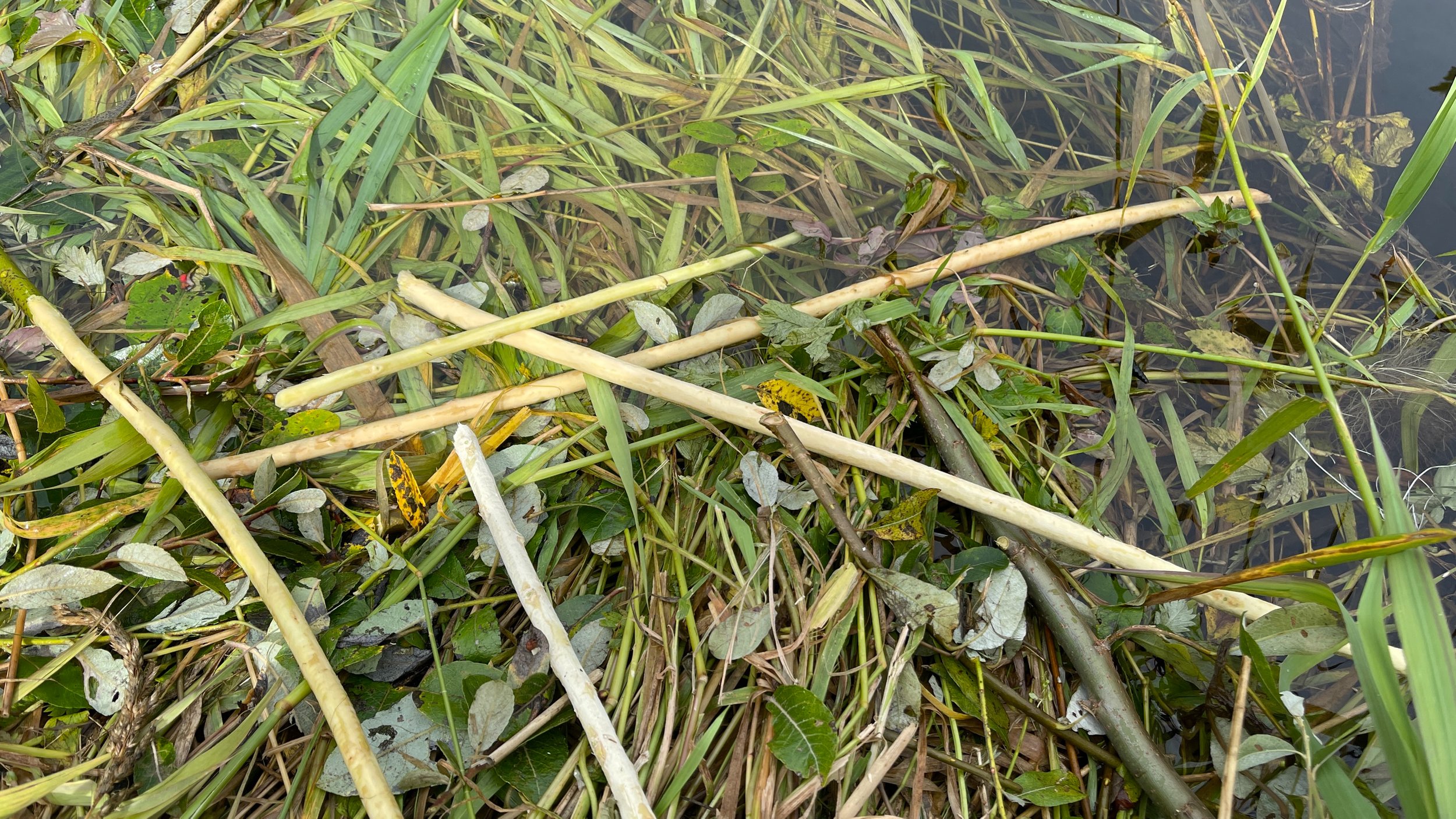
The vision of collaborative management.
Beaver play a valuable role in the ecosystem, building dams and ponding water, creating critical habitat for other species like Oregon coast coho salmon, reducing the force of floods, and improving water quality, but they can also cause damage to human infrastructure and plantings. We seek to maximize the benefits of their presence while minimizing the conflicts.
Participants in this collaborative stakeholder group are discussing habitat conditions for fish and wildlife, current beaver occupancy and activity, land use conflicts associated with beaver activity, stakeholder concerns, and management options in the watershed around Neskowin. We first convened in late September, 2021, and will meet again in early November.

Creating a plan together.
In our first session we toured key areas of the watershed, making our way from the coastline up Hawk Creek into the mountains. Beavers are living low in the watershed, where their activity maintains prime coho rearing habitat in the wildlife refuge, but also causes flooding around homes, infrastructure, and the community golf course. Up in the foothills the simplified creek holds great potential to be restored, with the help of beaver, into prime coho spawning habitat.
The next day, representatives from Project Beaver, Nestucca Watershed Council, Neskowin Beach Golf Course, Nestucca Bay National Wildlife Refuge, federal and state land management agencies, and private landowners gathered to identify stakeholder concerns, goals, and management options for the Neskowin Watershed.
September 30, 2021:
Stakeholder Gathering
At the start of our first meeting, we shared introductions, confessed the strangest food we’ve ever eaten, and compiled our hopes for this collaborative venture.
Meeting #1, initial hopes:
everyone is heard, up and downstream, large and small stake • everyone has buy-in • everyone is willing to follow through • property rights are respected • don’t want beaver to lessen value of private property • don’t want one landowner to drive beaver and problems onto adjacent landowner’s property • don’t want garden under water • keep private property useable • embrace creative solutions • establish well-defined expectations • find solutions everyone agrees with • stay flexible, open-minded • consider adaptive management • provide safety • create communication tree so all stakeholders will know timing of actions in advance • consider seasonality for potential actions • balance human-managed areas and beaver-managed areas • don’t force anything upon people, no threats • must work for a variety of interests • allows for space to try things, learn, respond • has education and outreach component • provides clear framework for initial actions, future triggers • stop the beaver “whack-a-mole” the “black hole” trapping cycle • establish spaces to encourage more beaver • have more salmon • schedule check-ins for group stakeholders
At the end of our first meeting, we discussed goals and guidelines and established a list of necessary criteria for an acceptable Neskowin Beaver Plan.
Meeting #1, plan requirements:
will meet the needs of people, beaver, salmon, all wildlife species • provides geographic and temporal flexibility • allows for creative solutions, allows time for good faith efforts to employ them, provides alternatives with triggers if the desired outcome isn’t achieved • clarifies geographic areas where people are the “boss” and other areas where beaver can be the “boss” • leads to a net gain in beaver habitat • emphasizes clear communication, vertically up the watershed amongst stakeholders, but also laterally across the community • will respect private property and the rights of landowners to steward their land and protect their infrastructure • establishes clear structure for planning and decision making
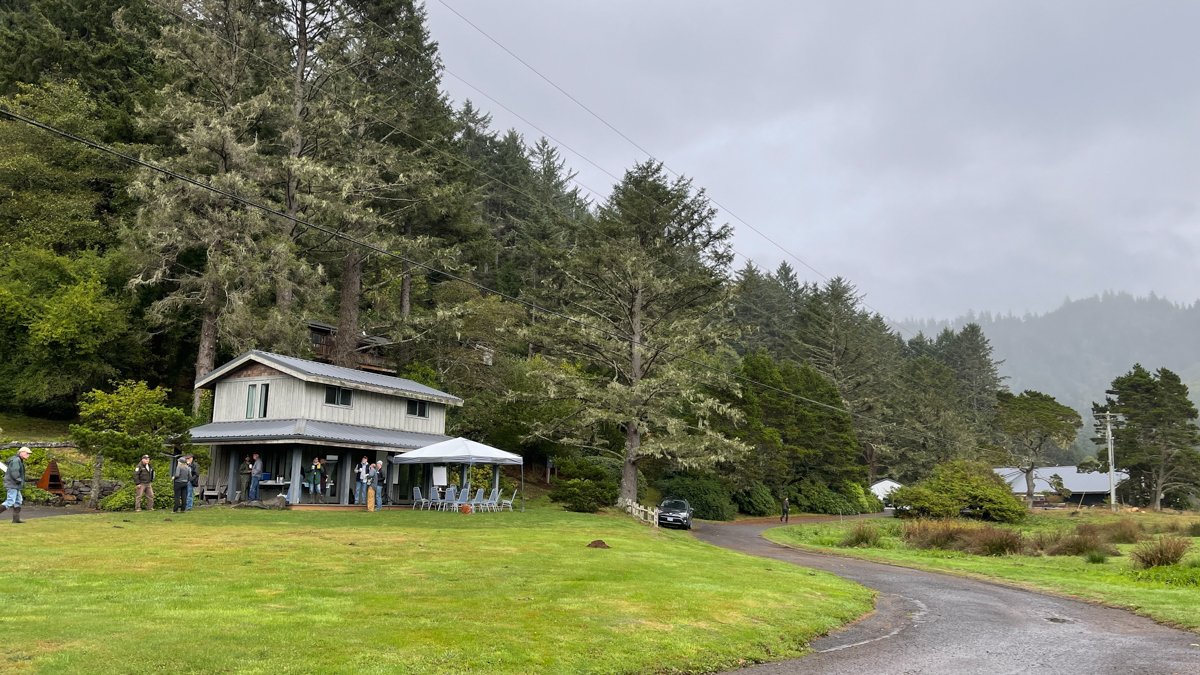






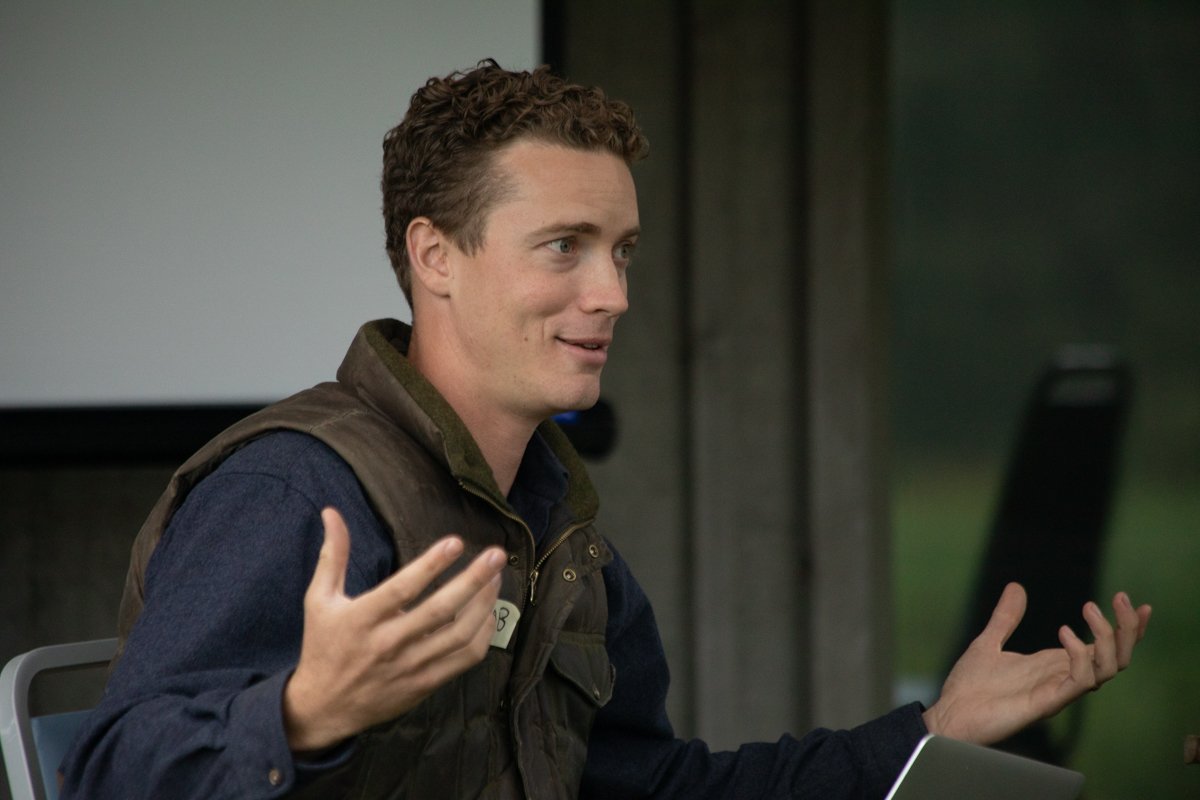

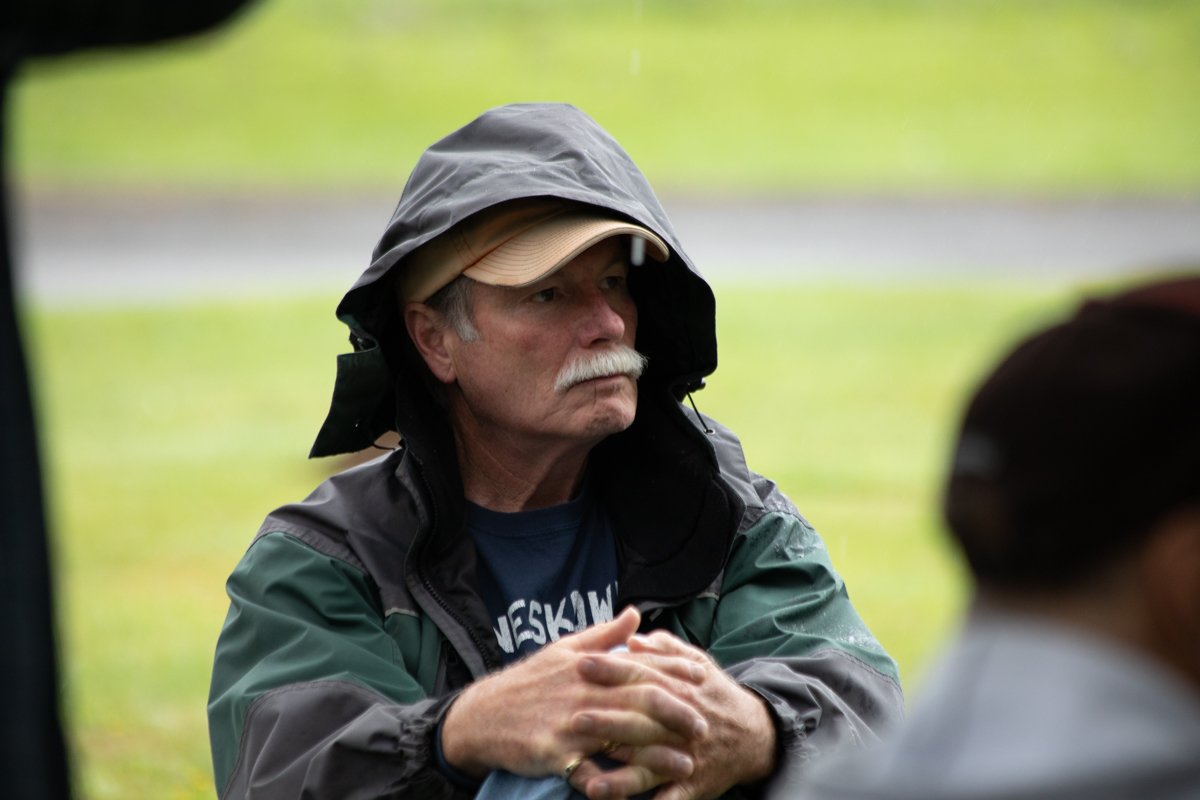
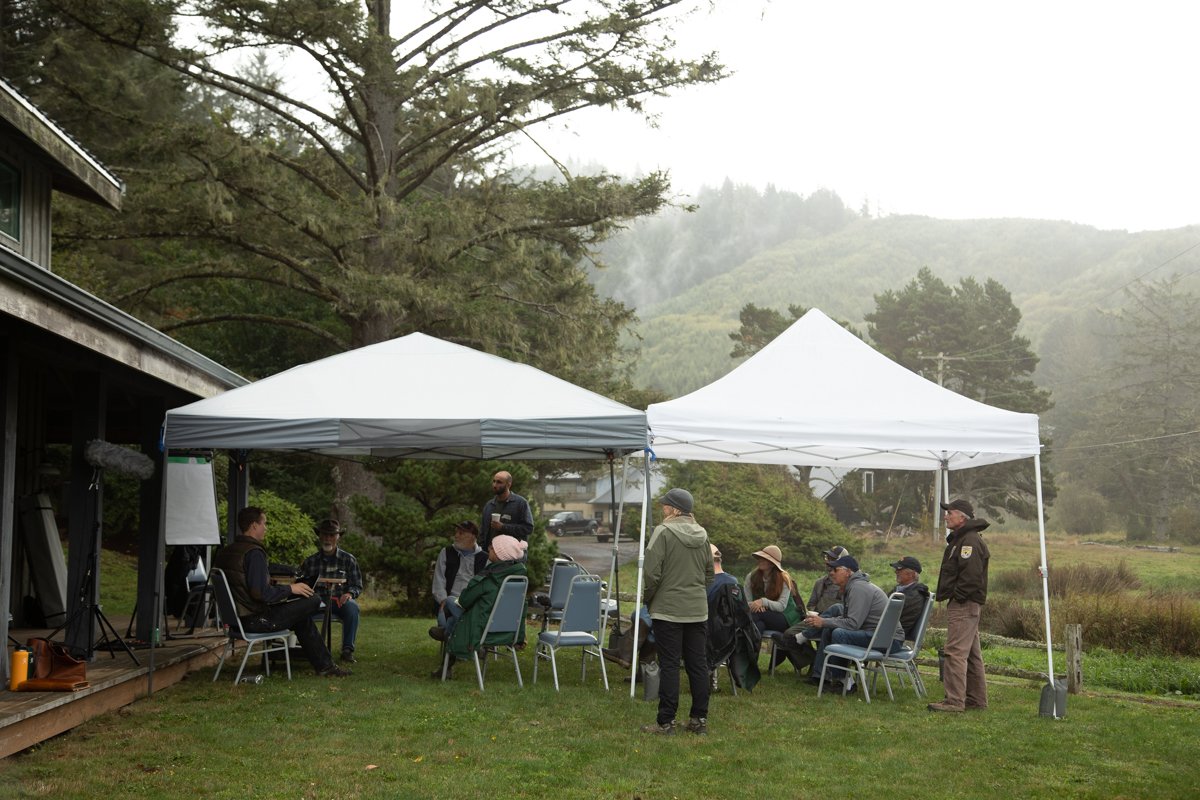
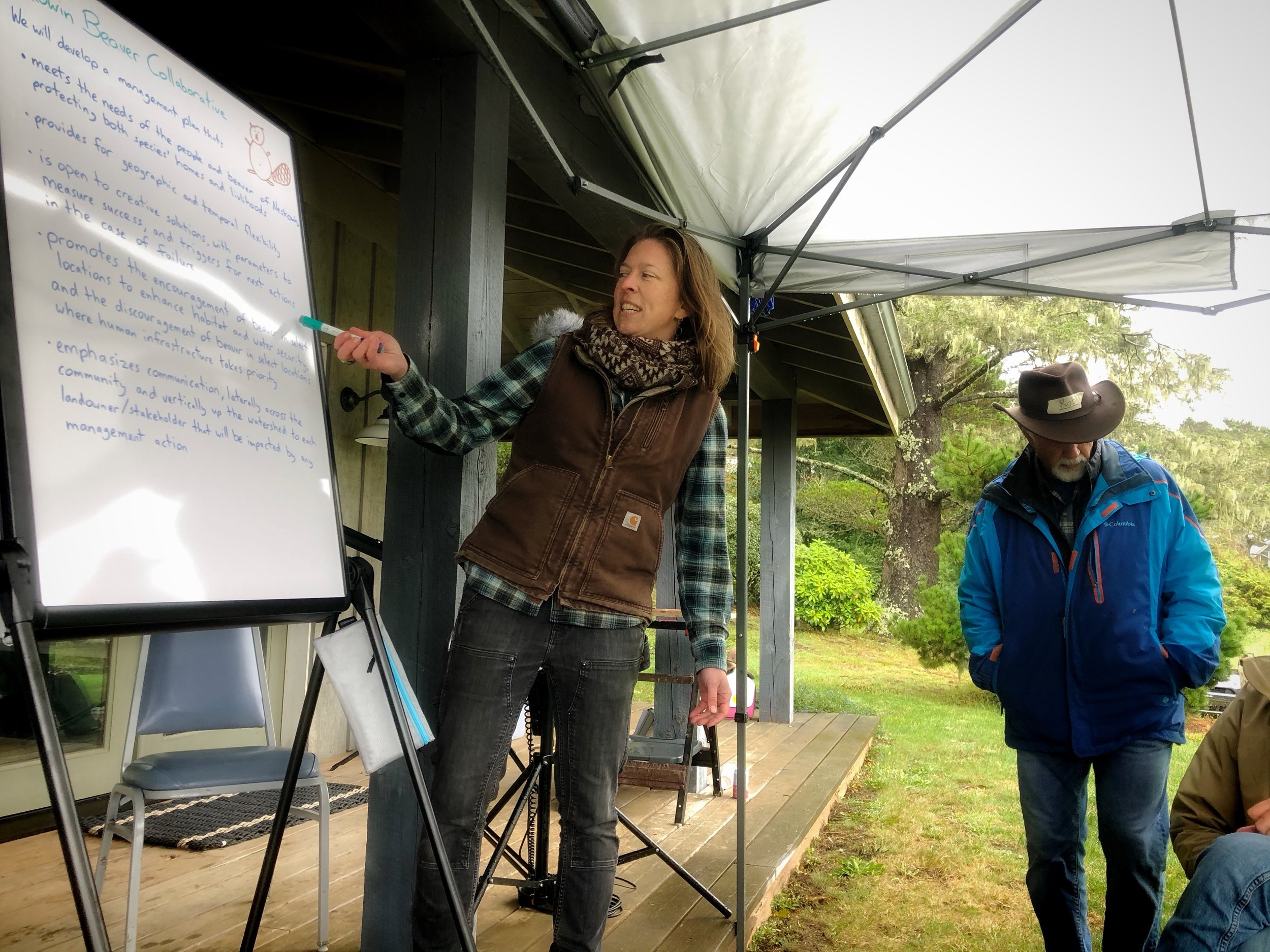
-

Beavers in Neskowin
-

Title
The federal Recovery Plan for Oregon Coast Coho identifies an increase in beaver ponds and beaver-managed aquatic habitat as the single most impactful way to recover the threatened species. Because we’re rather fond of beaver-based restoration ourselves, we got curious to learn what’s the state of beaver, coho, and restoration on the Oregon Coast?
Project Beaver, along with project partners from the National Oceanic and Atmospheric Administration (NOAA) Northwest Fisheries Science Center and Janning Social Science Consulting, will embark upon a stakeholder engagement project in the range of Oregon Coast Coho to explore the web of relationships between management agencies, restoration practitioners, landowners, and beaver themselves. How do entities tasked with a restoration mandate prioritize projects and decision making when everything is urgent and their funds and time are pulled in multiple directions at once? What are the levels of understanding in the differentiation of form-based versus process-based restoration? How are beaver-based restoration projects impacted by public perception? How might efforts be thwarted when beaver are categorized as a predator or pest, when they get into conflict with human infrastructure, or when the permitting process proves economically prohibitive? Furthermore, amidst the vast tangle of steep coastal streams, where will beaver do the most good for riverscape function? Where could the healing of riverscapes benefit the most threatened and endangered species, and where are the highest priority places to implement beaver-based stream restoration for the benefit of Oregon Coastal Coho first?
Over the next two years we will explore these questions through both social and ecological lenses. Our query will begin with multiple scales of stakeholder engagement including: structured one-on-one conversations, professionally facilitated focus group sessions, opportunities for written reflection and contribution, and an online survey instrument. We will identify and engage with two categories of stakeholders––key landowners and lead entities (such as State and Federal management agencies, Watershed Councils, Soil and Water Conservation Districts, and possibly Tribes)––and we will work to build trust and foster the growth of relationships, forming a planning cohort modeled after our “Oregon Practitioners Quarterly Collaborative” model.
Our ecological assessment will use GIS mapping to combine field survey data with national data sets and a Riverscapes Network Model called the “Beaver Restoration Assessment Tool” (BRAT) to note high priority and high opportunity areas for restoration. Through this process of bringing the social and ecological views into joint focus, merging them into an intertwined assessment of potential, we will be able to offer our stakeholders a replicable methodology to gather as neighbors and assess their own watersheds, empowering them to pursue their own planning and implementation of appropriately scaled beaver and coho restoration projects in the future.
Our project will culminate with the production and delivery of a custom-catered webinar training series, the distribution of a suite of informational resources and short films, and a report of our findings and recommended next steps to encourage more beaver-based restoration across the range of the Oregon Coast Coho and beyond.

photo credit: John R McMillan, NOAA/NWFCS







